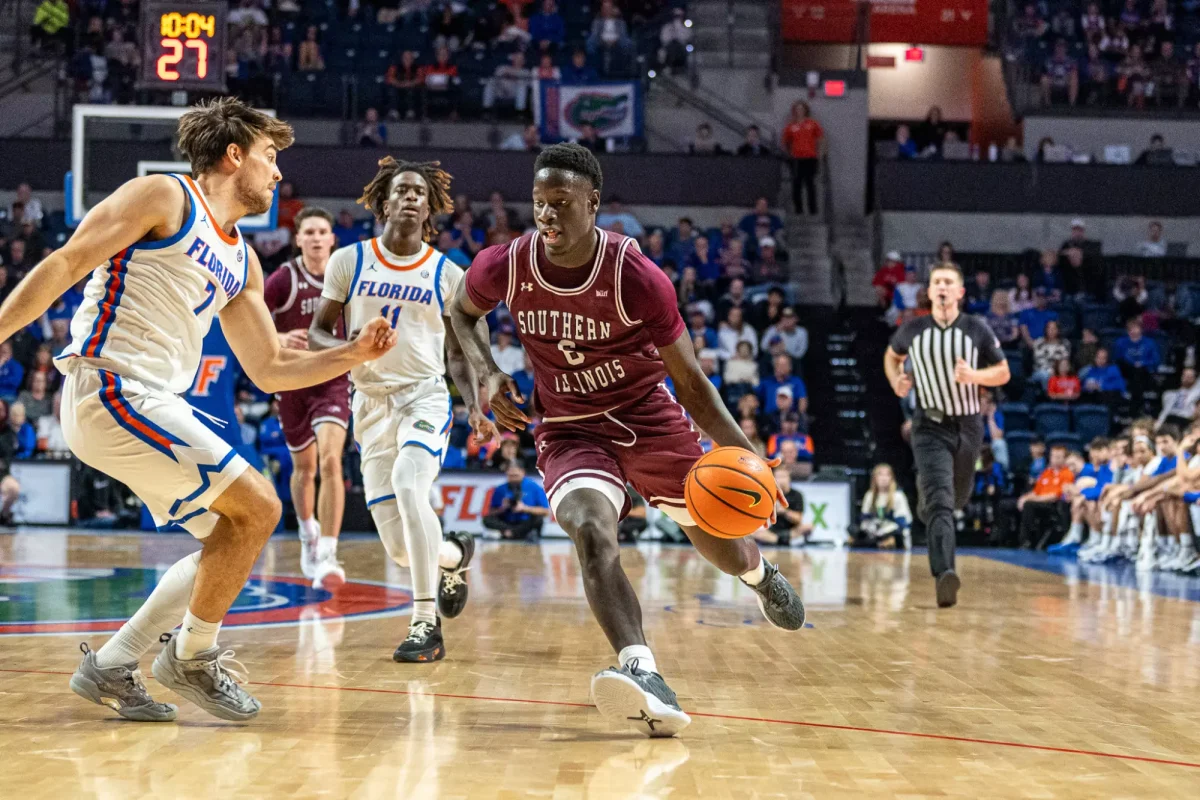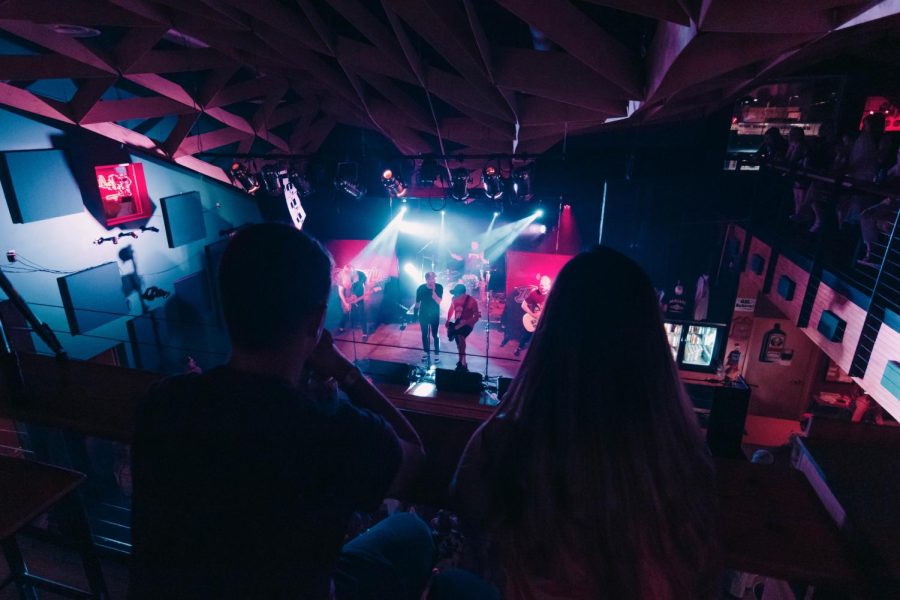From ice cream to coffee: Dippin’ Dots founder recruits SIU student for new product
Jackson Wood, a junior from Apex studying biochemistry, places a sample on a stir plate Thursday, Sept. 14, 2017, in a science lab in Neckers. Wood inserts a fiber rod into the sample to extract data used in detailing the aroma of 40 Below Joe-brand coffee. “The technique is called solid-phase micro-extraction,” Wood said. “We use the fiber to absorb volatile compounds off of the coffee and then analyze it.” (Cory Ray | @coryray_DE)
September 15, 2017
For the past year and a half, Jackson Wood has been freezing espresso in a lab in the Neckers building — but not because he prefers his cup of joe cold.
Wood, a junior studying biochemistry from Apex, North Carolina, was drafted into a new project involving frozen coffee at the request of the founder of Dippin’ Dots, Curt Jones, a 1986 SIU alumnus.
In 1988, Jones created Dippin’ Dots, a new kind of frozen treat that heralded itself as the “ice cream of the future,” and he is now busy producing a new product: 40 Below Joe.
Advertisement
Dippin’ Dots ice cream is flash-frozen using liquid nitrogen, and part of Wood’s research involves testing whether that method can be applied to coffee or if natural freezing is a better technique.
For Wood, the opportunity to conduct research early in his college career — he was a second semester freshman when he began the project through an undergraduate asisstantship — was part of the reason he chose SIU.
“It’s just so much experience than you can’t get in one year of senior research at another university,” he said.
After last spring, Wood’s research was almost frozen: the assistantship he received was no longer funded, and he was no longer getting university financial support to carry out his project.
“I think it’s really unfortunate the university doesn’t have the UGA program,” Gary Kinsel, a chemistry professor and mentor to Wood, said. “I think it’s really valuable for students to learn approaches to research which are truly different than what you learn in the classroom … All the labs we do are labs that we do in a book. You do what it says, and there you go. Research is a different thing.”
Jones offered to fund Wood’s research over the summer, and he became an employee of 40 Below Joe, continuing to conduct research within SIU’s facilities. Wood said he was able to work nearly full time over the summer because of Jones’ investment in him.
This allowed him to continue his project over the summer rather than waiting for three months, Wood said.
Advertisement*
His undergraduate assistantship was still unfunded going into the fall semester, so Wood remains a 40 Below Joe employee, receiving hours he would normally work if he were an employee of the university.
While Wood said he would have continued the research without being paid, he would not be able to perform in-depth research if he wasn’t being compensated because he would have to find another job to support himself.
“Research is a big part of what I do, and just something I’m really, really interested in,” he said.
Having to find a job on top of research is something Mary Kinsel, director of the university’s Mass Spectrometry Facility, said can slow students’ research.
“The students won’t see as much of the research if they only spend half the time in the lab,” she said. “A part of it is you have to spend time in the lab to actually see what goes wrong, to learn and have successes.”
As part of his work, Wood looks at how storage temperature affects the coffee, placing it in freezers 40 degrees below Celsius and 20 degree below Celsius, which more accurately represents normal freezer conditions.
Samples of the coffee were stored for one, two, four and six months, and the last of the trials ended during the first week of the fall semester.
From there, Wood heated the compounds to 85 degrees Celsius, which he said represents the optimal serving temperature for heated coffee.
The coffee, which Wood said is marketed locally as well as in Jones’ hometown of Nashville, has yet to expand to shelves nationally. It is is designed to be eaten frozen or heated up.
Wood said he studies the smells the product produces under different temperature using a technique called gas chromatography-mass spectrometry, which analyzes compounds related to aroma.
In the future, Wood said the research could be expanded to other roasts of coffee besides espresso.
The experiments are largely of Wood’s own design, and he said he is aided by the Kinsels’ experience.
“It’s really exciting for me to get to work on my own,” he said. “Over the summer, I was pretty much doing what I needed to do to get done to get [Jones] what he wanted. It was on my schedule.”
Staff writer Cory Ray can be reached at cray@dailyegyptian.com or on Twitter @coryray_de.
To stay up to date with all your southern Illinois news, follow the Daily Egyptian on Facebook and Twitter.
Advertisement










